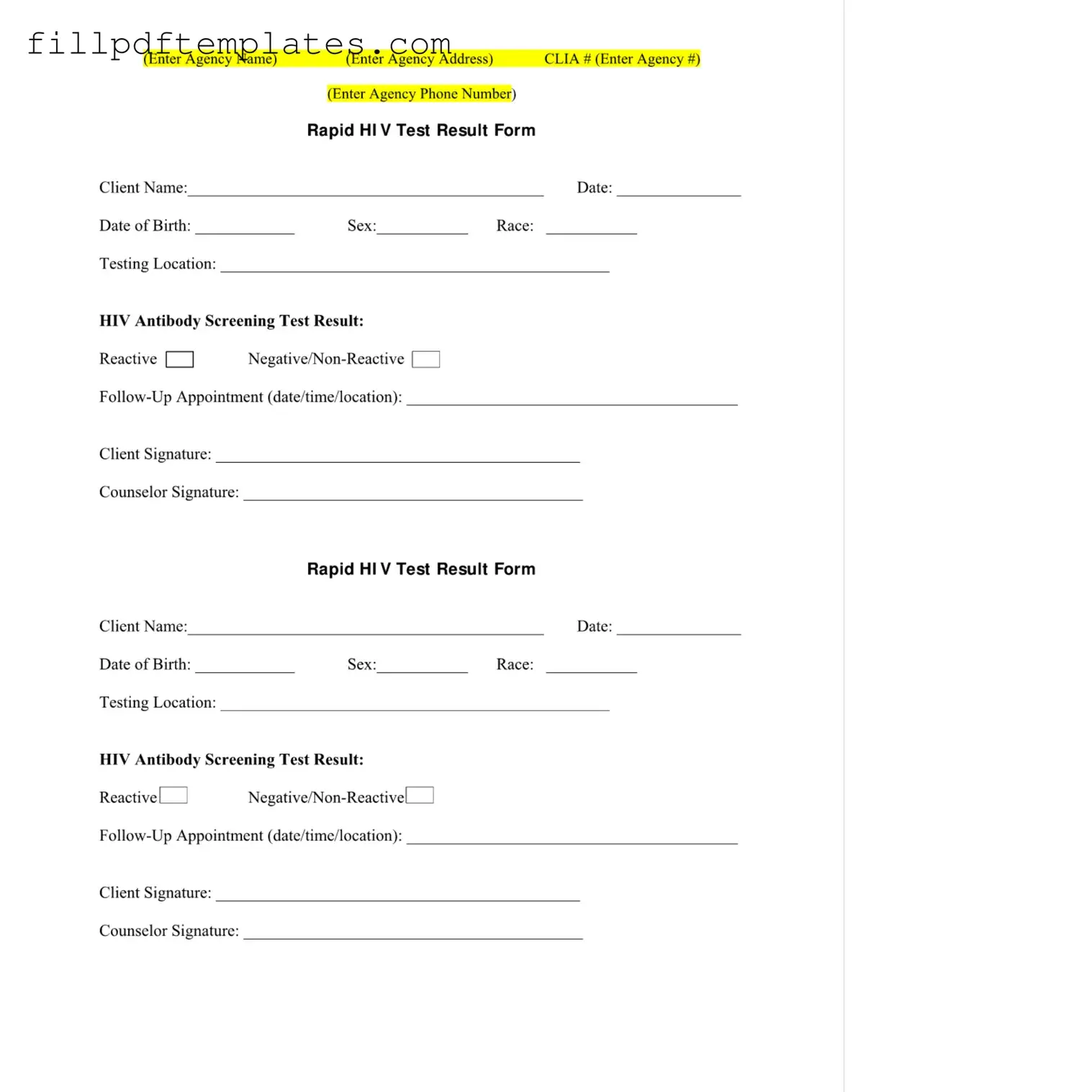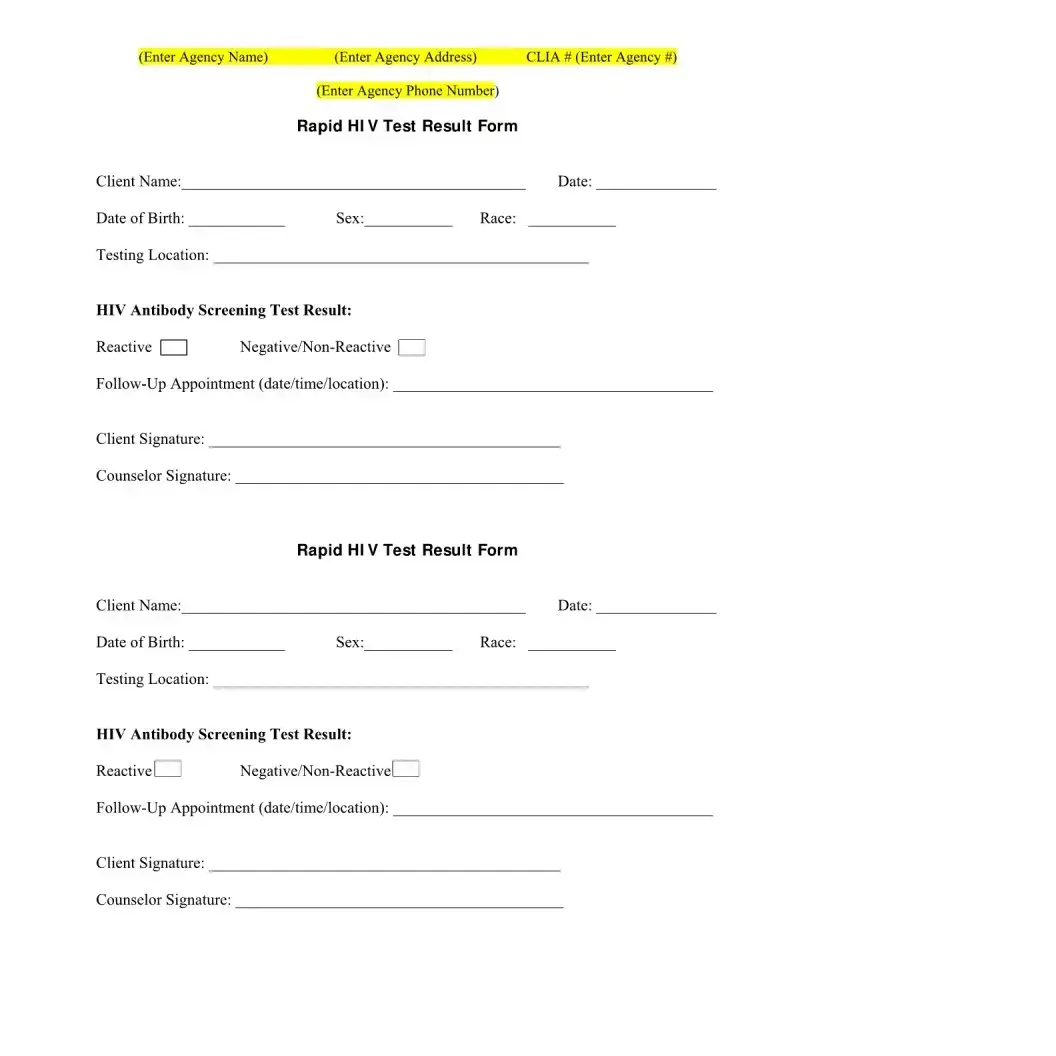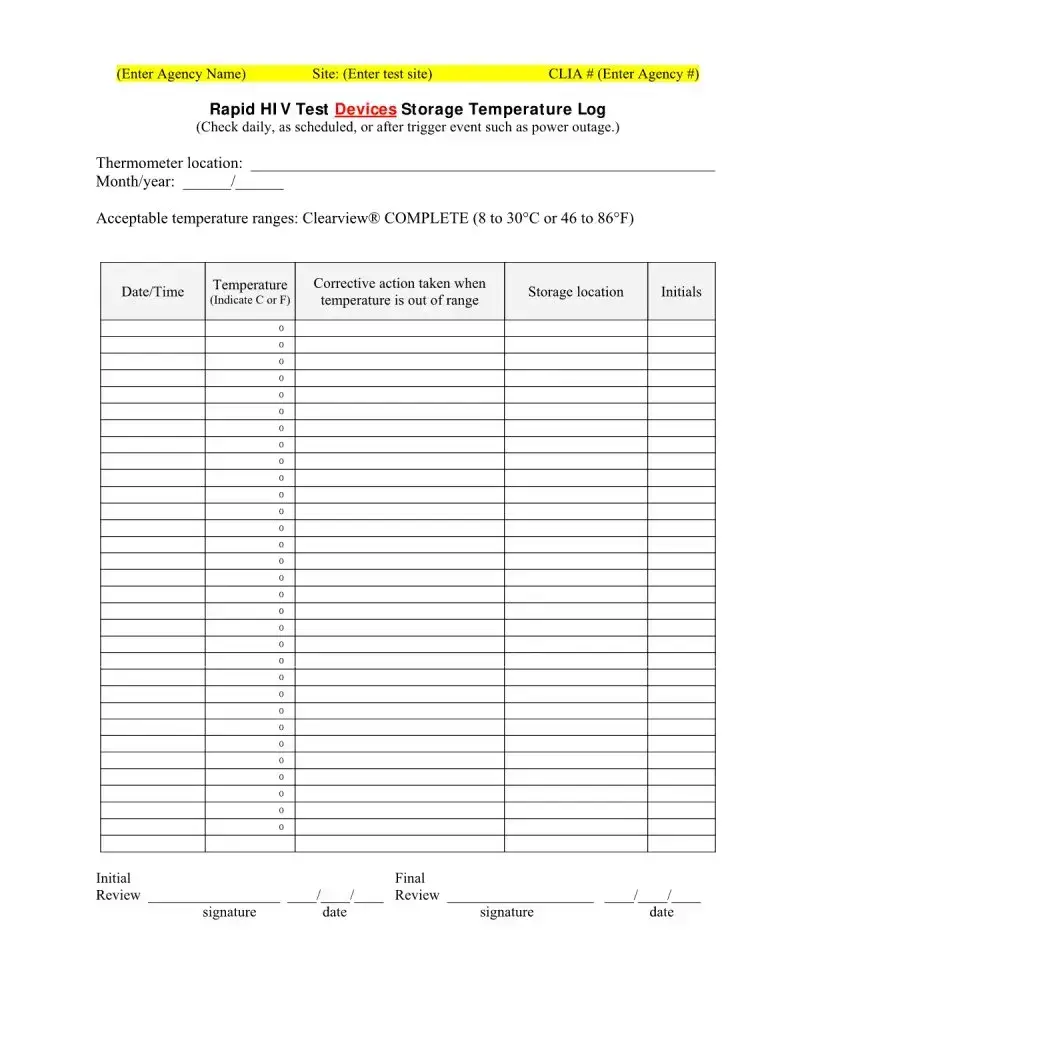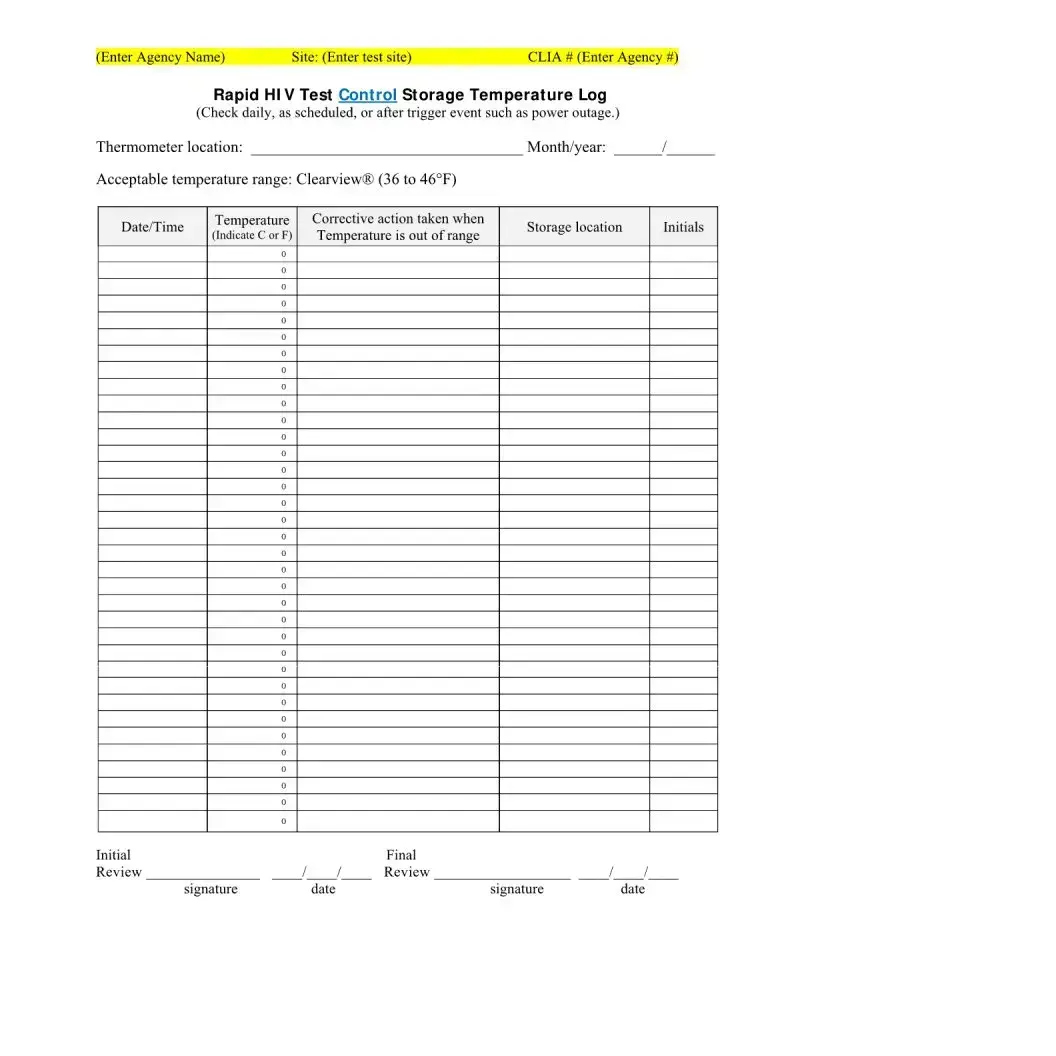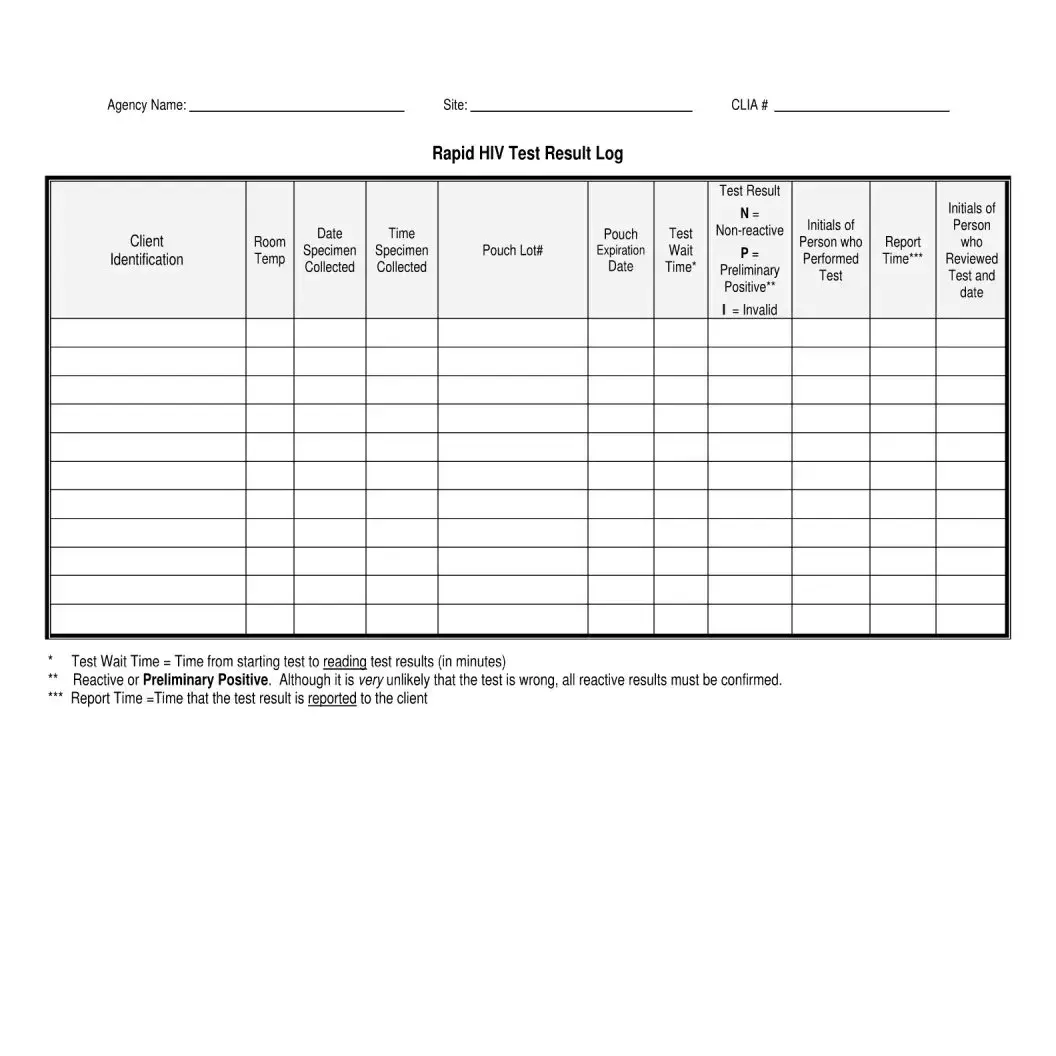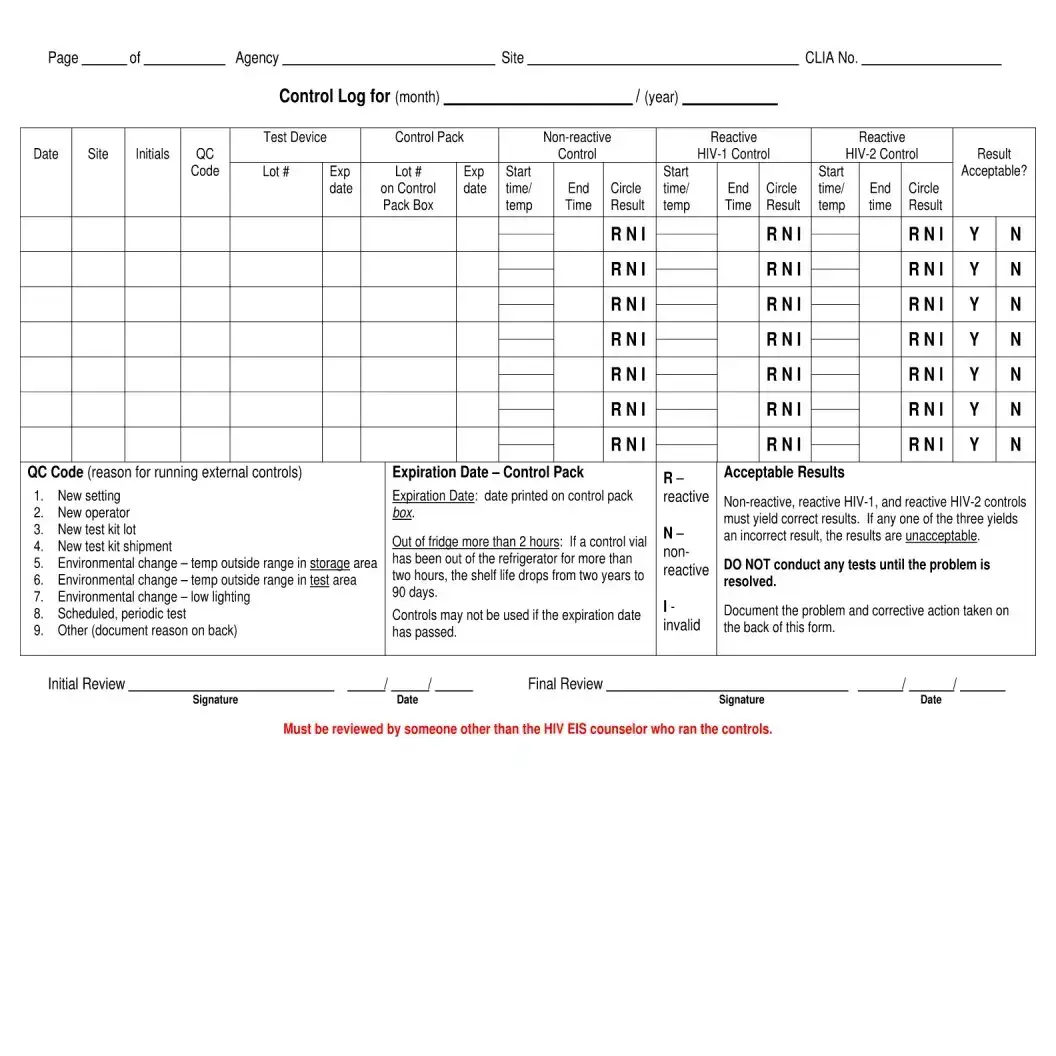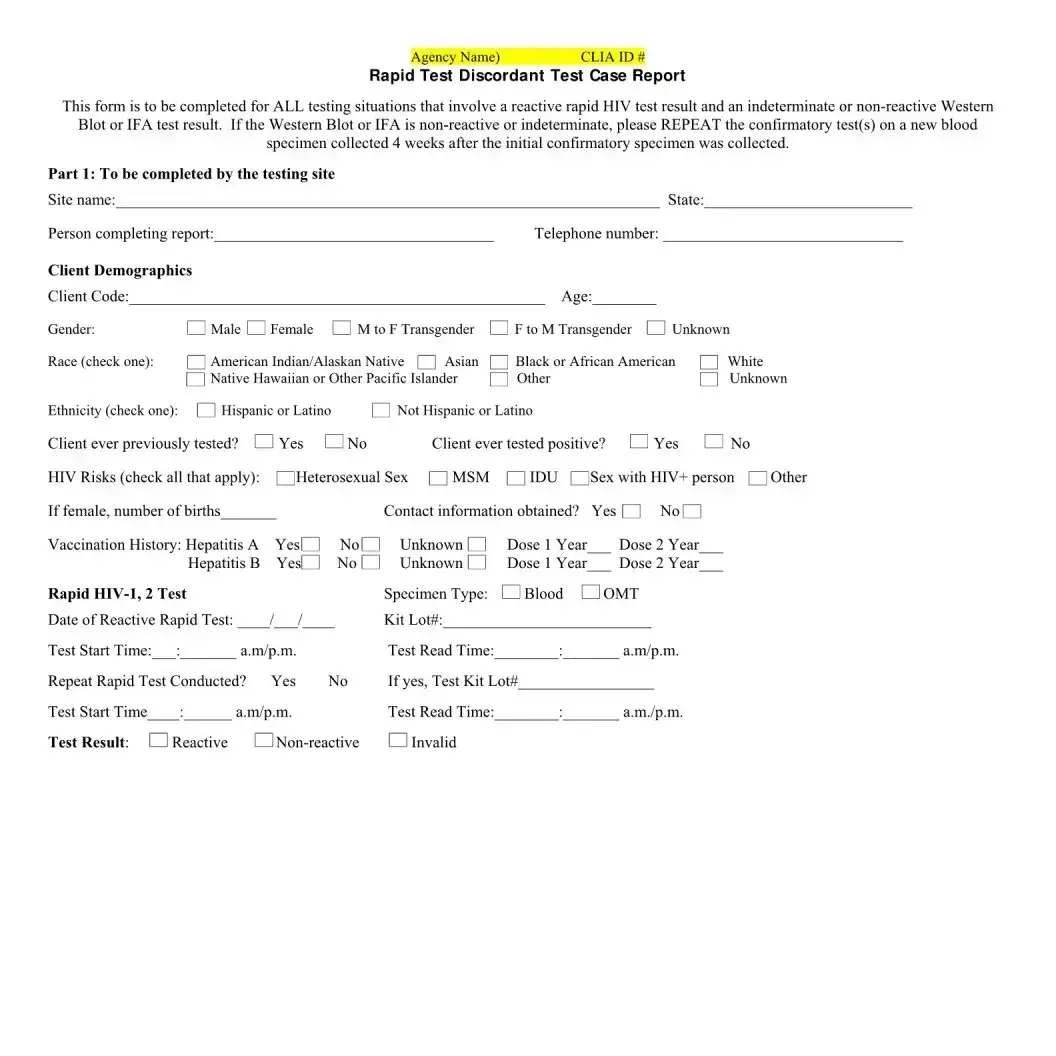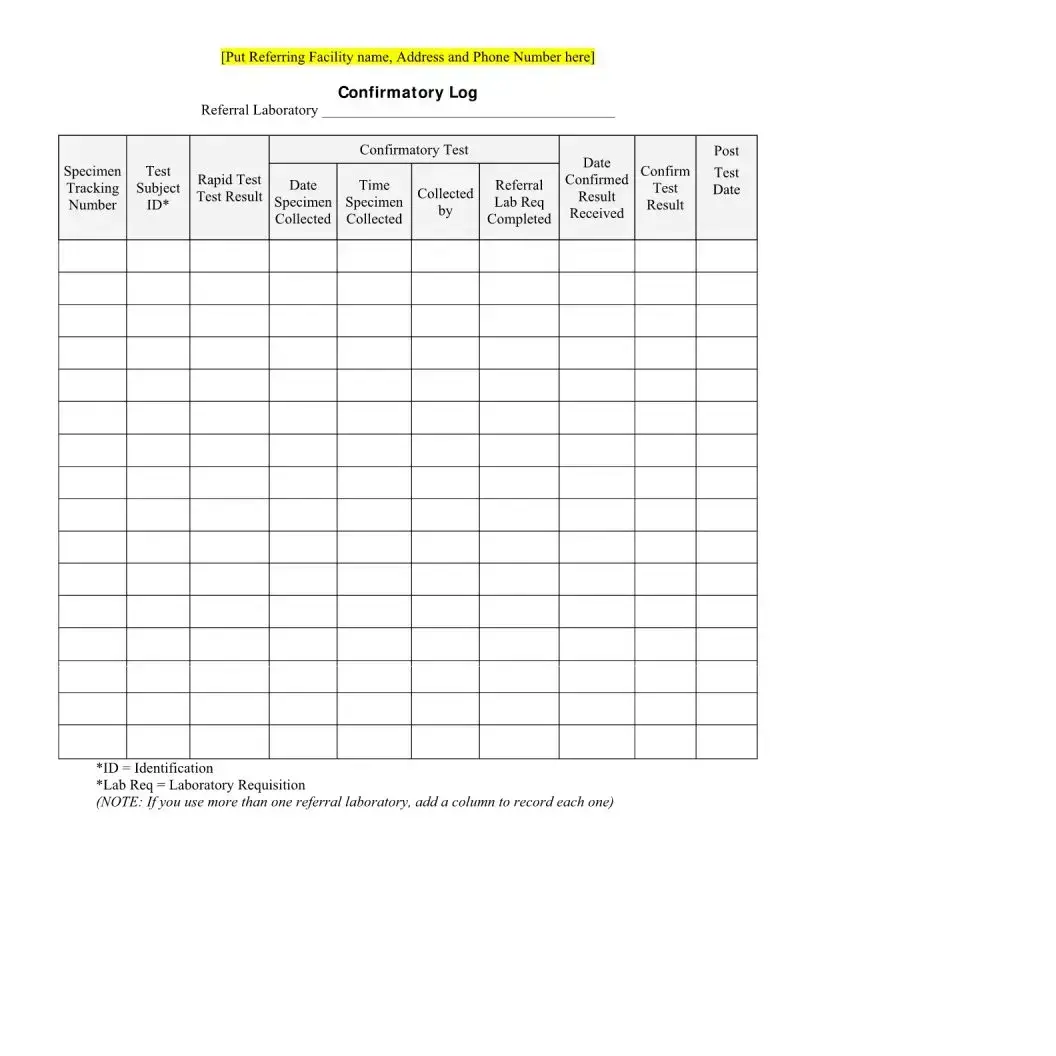The Negative HIV Test form serves as a crucial document in the process of HIV testing, encapsulating essential information that ensures both the accuracy of the test and the confidentiality of the client. At the top of the form, the agency's name and contact details are prominently displayed, along with the CLIA number, which signifies the laboratory's compliance with federal standards. Each test result is documented with specific client information, including their name, date of birth, and race, alongside the testing location. The form clearly indicates whether the HIV antibody screening test result is reactive or negative/non-reactive, providing vital information for follow-up care. Additionally, a section for scheduling follow-up appointments emphasizes the importance of continued health monitoring. Client and counselor signatures validate the process, ensuring accountability. Furthermore, the form includes a storage temperature log for rapid HIV test devices and control materials, which is essential for maintaining the integrity of the testing process. This log requires daily checks and corrective actions if temperatures fall outside acceptable ranges, thereby safeguarding the reliability of the test results. Overall, the Negative HIV Test form is not just a record; it is a comprehensive tool that facilitates effective communication between healthcare providers and clients, fostering a supportive environment for those undergoing testing.
